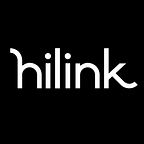Why a Bunch of EdTech Tools Can’t Compare to an Integrated Online Learning Ecosystem
This past year has been filled with uncertainty and unpredictability under the influence of COVID-19. In the face of quick adaptation to unexpected changes, The rise of remote hybrid learning has become a more viable option for many teachers in the education industry. EdTech has transformed the ways in which we educate, and teachers must now decide which EdTech tools are best suited for their classes.
“An ecosystem of innovative digital products shaped by educational leaders is becoming a ‘mainstream’ idea and movement.” — — Rob Abel, Ed.D., EDUCAUSE Review.
Of course, each student has their own individual learning needs, and a classroom full of children with various learning abilities requires multiple learning solutions. Using a “one size fits all” approach to online learning is a fallacy, just as using a “one size fits all” approach to teach a physical classroom wouldn’t work either. Having multiple EdTech tools available can expand learning opportunities, but sometimes having too many tools can backfire.
In this article, we will learn why the use of numerous EdTech tools increases the burden for school faculty and students. These issues can be divided into two camps: cost and complexity.
Accessibility and Cost of Different EdTech Tools.
The first issue with using multiple EdTech tools is the accessibility and cost of obtaining these tools. Not all schools have the budget to pay for expensive technologies, and EdTech is not feasible if a school does not possess the proper hardware, such as computer equipment or a reliable internet connection.
For software solutions, the cost of different EdTech tools can be high. For video conferencing platforms. Zoom, which holds around 75% of the global market share of web conferencing, costs $1,800 per account for a year. This price does not include other available features, such as cloud storage, a virtual whiteboard, auto-transcription, and document collaboration. For inexpensive document collaboration, Microsoft One Drive is a popular example. Microsoft Office 365, which includes one drive, can still cost up to $8 per user per month. Zoom and Microsoft also do not have a Learning Management System (LMS), requiring school leaders to purchase additional software. Most LMS, such as Canvas or Blackboard, range from about $300–800 per month.
Other than the essentials, there are additional costs of multiple EdTech tools. For certain subjects such as math or science, teachers may need to purchase additional microlearning or gamification EdTech tools to enhance the teaching experience.
School budgets may also have to consider an increase in spending on the IT department with the addition of so many different tools.
In short, issues of accessibility may always exist with obtaining EdTech tools. The problem with purchasing multiple EdTech tools will only exacerbate these issues.
The complexity of using multiple EdTech Tools
The second issue EdTech tools may pose is the complexity of using multiple tools. EdTech is meant to help teachers, but many current teachers grew up without access to personal computers, smartphones, and the internet. Students, on the contrary, are raised in an environment saturated by computer technology. These “digital natives” can intimidate teachers, especially teachers with limited experience using technology.
Now imagine using the learning curve of multiple EdTech tools combined! Many new EdTech tools that teachers are unfamiliar with may include instant messaging, LMS, online poll taking, video conferencing, document collaboration, online calendars, and more. Teachers must log on to Zoom for their classes, only to later have to log on to Gmail to directly contact students, to then have to log on to Blackboard to submit their grades.
The classroom complexity of using multiple EdTech tools is not just limited to teachers, as students will also have a learning curve. After adjusting to Zoom classes, students will then have to log on to Microsoft One Drive in order to complete a group research assignment, to then have to log on to GroupMe in order to communicate directly with their classmates.
Altogether, the use of so many EdTech tools can complicate the whole classroom experience as both teachers and students are forced to navigate between multiple different platforms.
Additionally, like issues of cost and accessibility, introducing many new EdTech tools will only exacerbate already existing problems of teachers’ and students’ familiarity with the latest technologies. This, in turn, will affect the efficiency of the greater education process.
Conclusion
Ultimately, the best solution for online and offline learning is an integrated learning ecosystem with multiple available features accounting for the different needs of all students, teachers, schools, and even parents.
“A learning ecosystem that enables learners and instructors to act as the architects of their environments is a powerful tool.” — The Next Generation Digital Learning Environment: A Report on Research
After months in the making, HiLink is proud to announce the development of our new fully integrated online learning ecosystem platform, HiLink Platform! This is a cloud-based platform that includes live-streaming video conferencing, a comprehensive LMS, instant messaging, document collaboration, file-sharing technology, and more!
To account for the unpredictability of current and future events similar to the COVID-19 global pandemic, an ideal learning ecosystem with all these features would allow teachers to seamlessly transition between in-person learning and online learning on a day-to-day basis. Other than video conferencing, there should be a minimal difference between a remote or physical classroom, and schools must make it a priority for educators to master using such an adaptive learning ecosystem. With this integrated vision in mind, EdTech tools will only serve to add more flexibility to the classroom in a pre-or post-pandemic world.
